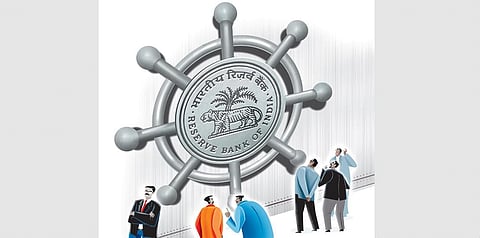

MUMBAI: While the Reserve Bank of India’s (RBI) war against inflation is far from over, the central bank seems to be winning the battle against excess liquidity. By deploying several weapons from its armoury, the RBI has managed to drain out over Rs 2 lakh crore from the banking system in nearly three weeks.
As per RBI data, liquidity was around Rs 2.64 lakh crore on August 10, which went down to Rs 1.21 lakh crore on August 13 and on August 21 the system transitioned into a deficit of Rs 23,644.43 crore. However, two days after on August 24, the overall liquidity moved into a surplus of nearly Rs 25,800 crore. RBI’s decision to impose an incremental cash reserve ratio (ICRR) has played a crucial role in sucking excess liquidity.
RBI Governor Shaktikanta Das on August 10 announced banks would be required to maintain ICRR of 10% on an increase in their deposits between May 19 and July 28, to absorb surplus liquidity of Rs 1 lakh crore from the banking system.
Withdrawal of Rs 2000 notes
The surge in liquidity due to the withdrawal of Rs 2,000 notes from circulation was the main trigger behind this decision. The RBI announced on August 1 that nearly 88% of Rs 2,000 banknotes valued at Rs 3.14 lakh crore have returned to the banking system. Out of the total notes returned, about 87% valuing Rs 2.73 lakh crore have come back in the form of deposits and the remaining about 13% has been exchanged into other denomination banknotes.
RBI is not comfortable with excess liquidity as extra money in the system dilutes its efforts to tame inflation. The central bank wants overnight call money rate to be close to repo rate.“When there is a looming risk of inflation and pressure on currency, the first line of defence for any central bank is to push up short-term rates. RBI has pushed them up by draining excess liquidity. By draining excess liquidity, RBI has ensured that there remains an upward bias to the short-term rates,” Soumyajit Niyogi, Director - Core Analytical Group, India Ratings told this newspaper.
Taking cues from RBI’s liquidity tightening measures, the overnight call money rates have risen over the past few weeks. The call money rates were hovering around 6.3% on August 1. After the imposition of ICRRR, the rates went up to 6.36% on August 10. Compared to August 1, call money rates have surged by 46 basis points and now it is hovering around 6.76%.
Effects of tight liquidity
Due to the tightening of liquidity and high credit demand, banks and non-bank finance companies (NBFCs) have turned to certificates of deposits (CDs) and commercial papers to raise short-term funds. With the rush to raise funds through these instruments, the three-month CD and CP rates have risen by 10-20 basis points in the last two weeks. The three-month CD rates are hovering around 7.00-7.20% levels while rates on three-month CPs are at around 7.20-7.40%.
Tight liquidity will also increase medium and long-term interest rates. Apart from imposing ICRR, RBI has been conducting variable rate reverse repo (VRRR) auctions to drain excess liquidity. However, VRRR done by the RBI didn’t prove effective due to weak responses from the banks. RBI conducts VRRR auction to remove excess surplus liquidity.
“RBI doesn’t want any unwarranted liquidity in the system and that is why it is conducting VRRR auctions. Any excess liquidity will bring down short-term rates, which RBI doesn’t want. RBI is using an array of tools to ensure that short-term rates are close to the repo rate,” added Niyogi. “RBI wants liquidity to be at optimum level. It is aiming for a balanced approach where liquidity should be neither too high nor too low. However, chunky outflows owing to monthly GST payment or quarterly advance tax payment do create more volatilities,” he added.
Experts believe hardening of interest rate will help RBI shore up the value of rupee.“Managing liquidity could help rein in inflation as currency in circulation comes down. Tight liquidity hardens short-term rates, helping RBI to arrest a slide in rupee as rupee depreciation further complicates inflation management. By imposing ICRR, RBI has indicated its preference for short-term, medium-term and long-term rates in the system to move up, which helps attract foreign inflows and strengthen Indian currency,” Madhavankutty G, group chief economist, Manappuram Finance.